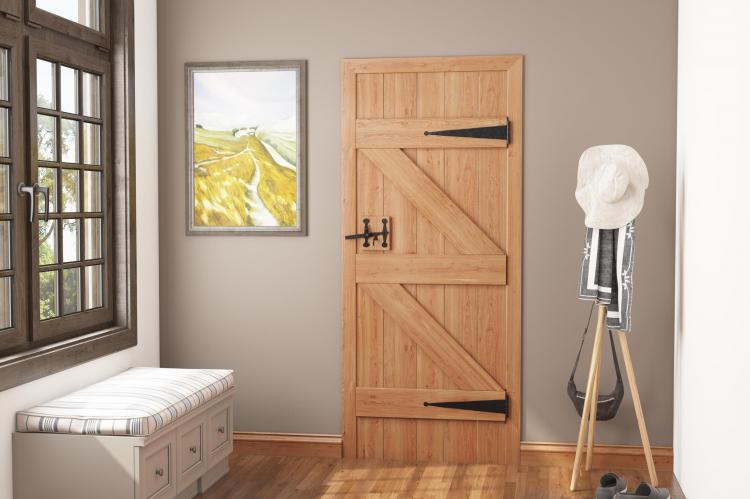
Replacing Door Handles when they're broken or old is easier than you think.
Hello and welcome to our four-part guide series that will take you through the steps on how to hang an interior door, how to trim an interior door if it is too big, how to fix door furniture, and how to finish a door. Whatever your background – from an experienced tradesperson to a weekend DIY’er – hopefully, you will come out the other side with some great tips and best practices that you can take away with you and apply to your interior development projects.
The third article in the fortnightly series is a step by step guide on how to fit the interior door handles to a new or existing door. If you want to know more about trimming an interior door, click here to be directed to our last article where you can find more information.
Interior door handles can be quick and easy to install or replace. If you plan to replace an existing door handle, you will first need to unscrew the faceplate and handle casing, fit the new handle and screw to secure. If it is a new interior door, most door handles come with fitting instructions and measuring templates that you can follow to make life a little easier. The information in this step by step guide applies to a new interior door.
If you are unsure after reading this article, Blueprint Joinery recommends always getting a local tradesperson involved as mistakes can be costly. We also recommend referring to your product fitting instructions at all times of the installation process. All our fitting guides can be found here on the website.
Recommended equipment
Below is a list of tools and equipment useful in fitting handles to an interior door:
- A tape measure
- Pencil
- Various screwdrivers
- Wood chisel
- Rubber mallet
- Drill
- Drill bits designed specifically for wood (including a 2mm for pilot holes and 25mm spade bit)
- Masking tape
- Door wedge (to assist in holding the door in place while hanging)
- Safety equipment including face mask and safety goggles.
1 – Measure the door
We recommend following the manufacturers fitting instructions for more information on handle placement. Typically, you are looking at around 990mm high, but this can also depend on how tall your door is. Use a tape measure and mark with a pencil on the narrow section of your interior door the advised height.
2 – Secure door handle template to door
With the door measured and marked, attach the door handle template using masking tape. All door handle templates are different, but will all indicate where you will need to drill and chisel. Use the pencil to mark the required drilling and chisel areas on the narrow section and both outer sections of the door.
3 – Drill pilot holes
It is always best practice to drill pilot holes first; it makes it much easier to drill screws in later on and reduces the chance of the wood splitting. Use a 2mm drill bit, and then use the fitting instructions to find out how big the holes need to be to fit the handle and faceplate screws. Drill holes in the narrow section and both outer sections of the door as advised by the template.
4 – Drill 25mm spade holes
You will also be required to drill 25mm spade holes for the spindle as advised by the template.
5 – Chisel out the faceplate
With all the holes prepared in parts three and four, we can now concentrate on attaching the faceplate to the narrow section of the door. Hold the faceplate in the place where you eventually want it to go, and then trace an outline with the pencil.
Using the marked outline, chisel out the faceplate area using a wood chisel and a rubber mallet. Faceplates come in different sizes, so it is important that you refer to the manufacturers fitting instructions for more information on how deep to go. Remember, it is very easy to remove too much wood, but impossible to reverse those changes if you have chiselled too much off, so it is important to be careful.
6 – Fit the faceplate
Secure the faceplate using the screws provided with the door handle. As stated in step three further up, use pilot holes to make this process easier.
7 – Attach door handles into the spindle holes
With the faceplate in place, you can now attach the door handles into the spindle holes. It is important that the two handles align vertically and horizontally for a perfect finish.
7 – Fix strike plate to the door frame
A strike plate is used to keep your door closed; when you close a door, the lock bolt - which is attached to the spindle – extends into the strike plate hole.
Mark where the lock bolt hits the door frame (we recommend following the manufacturers fitting instructions for more information on strike plate placement). First, drill pilot holes, and then larger holes to fit the screws to secure the strike plate into place. It is important that the hole is as deep as the length of the door lock bolt.
Make a mortise for the strike plate using your chisel and mallet and then screw the strike plate in place.
